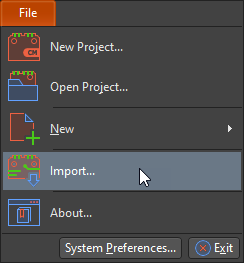PCB Layout Tips for Hall Sensor PCBs and Other Hall Effect Applications
To me, one of the coolest things about kids is how much they can be amazed by science and other phenomena that, as an adult, you’ve just grown to accept. I gave a five-year old homemade magnetic slime for his birthday one year; consisting of iron oxide powder, Elmer’s glue, and liquid starch, the prospect of a black gooey mess delighted everyone except for the boy’s mother.
No one could dispute the fun involved with mixing the stuff or the delight in holding up blackened fingers. Everyone was surprised when the slime actually followed along with a neodymium magnet. You can certainly feel everybody’s imagination getting rekindled with the magic of magnetic slime.
In my experiences, I encounter a similar form of magnetism in understanding how to best use magnetic forces within my circuit board designs. Having an understanding of Hall Effect applications will be able to keep your designs triggering your imaginative side. Revisiting the Hall effect may even rekindle your memories of magnetic toys.
Hello Hall Effect!
A transverse magnetic field applied to a current-carrying conductor induces an electric field. The resulting difference in potential produces a very small voltage called the Hall voltage that depends on the material, the current, and the magnetic field.
- Basic Hall sensors detect the presence of a magnetic field. Variations of the basic model work as switches, latches, and sensors.
- Hall effect switches turn on in the presence of a transverse magnetic field and turn off with the removal of magnetic field. Remove the magnetic field from a Hall effect latch and the latch will remain on. The latch turns off with the presence of a parallel magnetic field or by switching off the power.
- Hall effect sensors output an analog voltage proportional to the applied magnetic field.
Let’s Look at a Few Hall Effect ICs
Solving the challenges involved with Hall effect transducers and PCB design begins with understanding a few sample Hall-effect IC operations.
1. Sensitive low power, low noise sensor ICs work within battery-operated, mobile applications that require energy efficiency and minimal PCB space. In this example, either a north pole or south pole triggers IC operation. Not linking magnetic polarity to circuit operation provides the potential for reducing cost and eases installation.
Because an accompanying timing circuit allows power for only a short time, average current consumption remains low. The circuit remains off during the duty cycle.
2. Ultra-low-power Hall latch sensors function as brushless dc motor sensors, mechanical travel sensors, and measure fluids within portable medical devices, electric bikes, and flow meters. The circuit uses a pin-selectable sampling rate to monitor changes in movement.
During operation, the device responds to a magnetic field applied perpendicular to the top of the package. Placing a south magnetic pole near the top of the package causes magnetic flux to travel from the bottom to the top and establish positive polarity. With this, the magnetic threshold operating point rises until crossing the threshold. As a result, the circuit produces a low voltage.
Applying a north magnetic pole pushes the magnetic threshold release point above threshold and causes the circuit to produce a high voltage at the output. Alternating the north and south poles toggles the output.
3. Based on conventional CMOS technology, an integrated magnetic field sensor uses the Hall effect to sense current. In this design, an additional ferromagnetic layer functions as a magnetic flux concentrator and provides high magnetic gain. With this approach, the circuit remains extremely sensitive to any magnetic field parallel to its surface and produces a linear output voltage proportional to the magnetic field. The circuit includes high voltage isolation to the current conductor on the PCB and operates with low noise and low offset.
Shields Up!
Each of the example Hall effect transducers have high sensitivities to magnetic fields. Stray external magnetic fields can cause inaccurate measurements. PCB designs can protect against external fields through several methods.
You can prevent magnetic interference by covering the device package with a surface mount magnetic shield. While the shield shunts external magnetic flux away from the package, it does not impact the magnetic field generated inside the package around the primary current-carrying path. Fasten the shield to the PCB with epoxy.
A Hall device does not have the susceptibility to flux lines parallel to its plane. As a result, you can leave the sides of the shield open. If the circuit requires additional shielding against external perpendicular flux, place a second shield on the underside of the PCB.
Spaced Traces
Orient high-current conductors close to the device perpendicular to the plane on the PCB. With this orientation, you allow magnetic flux to circulate in the plane of the Hall device instead of the through the element. As a result, the flux has little or no effect on the Hall IC output. Although space limitations exist, you can protect the Hall device from interference by maintaining as much space as possible between the device and other current-carrying traces.
Getting more invested and engaged with understanding the Hall Effect and magnetic processes has revolutionized my creative passion for PCB designing. I would be nowhere with my designs, though, without a strong PCB design software which can handle my inventive needs. Thankfully, Altium’s CircuitStudio® is capable of handling an22y request I might have regarding layout, rule checking, and providing smart schematic and footprint creating software.
If you’re looking to find out more about how to best utilize magnetic forces within your PCB designs, or if you’re just looking to talk about how to optimize your PCB design software for your design needs, consider talking to an expert at Altium now.

















